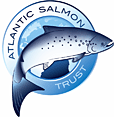Workshop sessions
Topic 6. Ecologically-based river restoration
(ecologically driven and within context of reference conditions).
a) Colin Thorne, University of Nottingham, UK and Brian Cluer, NOAA’s National Marine Fisheries Service, Santa Rosa, California, US.
River restoration planning using ecological reference conditions: concept.
River ecology results from catchment inputs of water, sediment and organic material to the fluvial system and the operation of hydraulic, geomorphic and biotic processes, which result in habitat and, ultimately, biota. It follows that ecological reference conditions for river restoration stem from a cascade of inputs, processes, morphologies, habitats and ecosystem responses. However, river management and restoration projects that are ecologically-led are usually driven by laws and/or the application of statutory authorities that are species specific. For example, in the USA the primary instruments responsible for restoration are the Endangered Species Act and the Clean Water Act. Both of these laws spring from and incorporate ecology, but their statutory implementation focuses on reducing additional losses of habitat and listed species. Consequently, ecologically-led restoration efforts usually involve constructing habitat features suitable for individual species, rather than restoring the catchment inputs of water, sediment and organic matter, the fluvial processes or the complex natural morphologies necessary to recreate or conserve functioning ecosystems. In practice, statutory implementation of the current regulations at the species scale tends to create impediments to improving ecology. Current research at NOAA Fisheries, in collaboration with the US Fish and Wildlife Service and US Army Corps of Engineers, is attempting to address the problems that arise when using ecological reference conditions by improving the knowledge base of Federal and State officials responsible for reviewing and permitting restoration proposals. Regulatory staff are being trained to work with project proponents in designing projects that recognize the catchment context for restoration and which address the physical, chemical and biological causes of ecosystem degradation rather than treating symptomatic species decline.
b) Peter W. Downs, Frank K. Ligon, and Neil S. Lassettre, Stillwater Sciences, Berkeley and Arcata, California.
River restoration planning using ecological reference conditions: sub-catchment approaches in practice
The use of ecological reference conditions is an analytical approach to restoration planning that avoids many of the pitfalls of approaches based on historical morphology or biological populations. Using process-based, empirically-calibrated, biophysical analyses undertaken via a variety of field- and model-based techniques, the approach is practical because it works within the existing disturbance regime of the catchment to result in discrete, fundable, restoration actions in individual reaches targeted directly at factors limiting population success. The types of ecological reference vary according to the management challenge and available data: we illustrate contrasting examples from the west coast of the USA. The approach is not without challenges though, for instance from stakeholders who prefer the concept of historical reference conditions, and project funders who prioritize ‘quick fix’ implementation over through project planning. However, the practical benefits, including the capacity to provide reach-scale solutions within a catchment context to ensure ecological integrity and the direct link to legislation aimed at threatened and endangered species, make it a challenge worth pursuing.
Back to Ballater workshop page
|
Updated: 23 Jan 2024, Content by: HM
|






